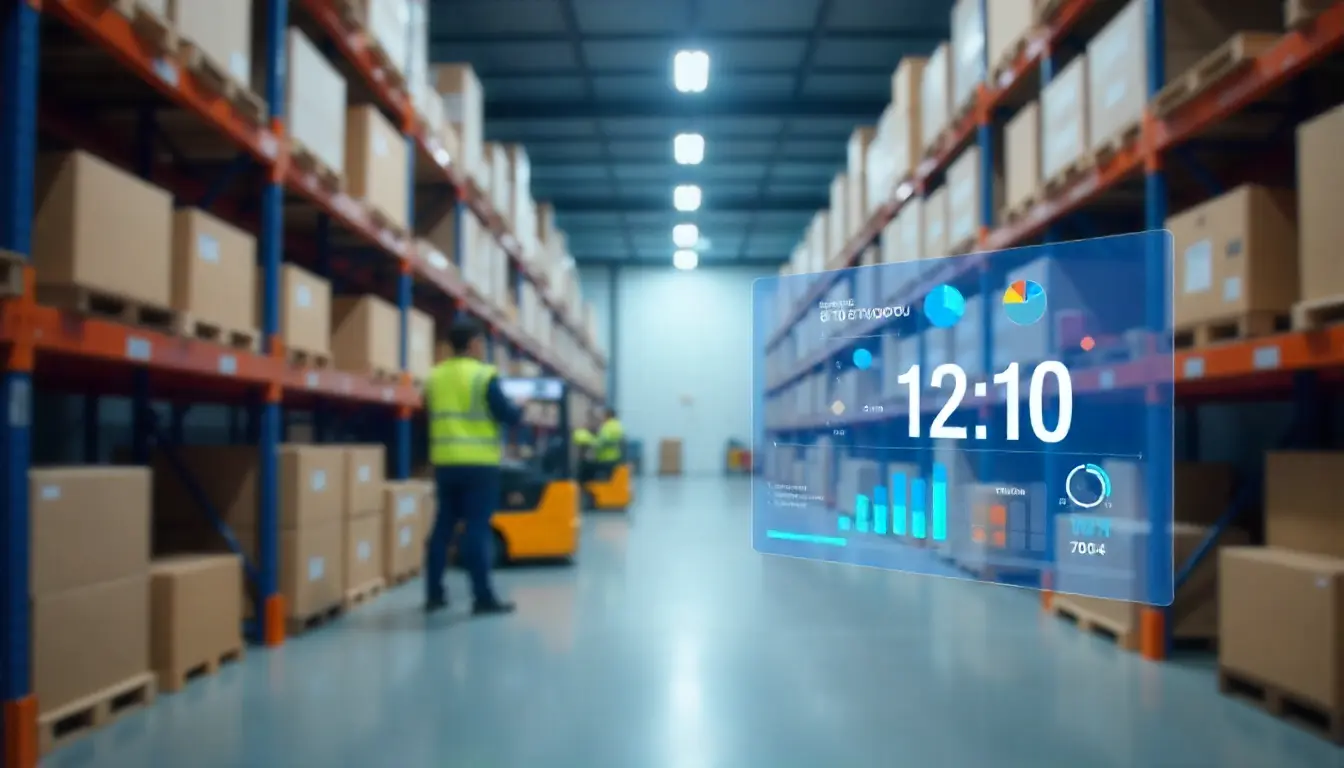What is Lead Time in Inventory Management?
Lead Time in inventory management is the timespan between the order initiation time and the receipt of the products or materials. In other words, it is the duration of time between the beginning of the supply chain process and its completion.
Companies across the world strive to reduce the lead time with the inventory management module of the ERP software to improve their operational efficiency, productivity, and customer satisfaction. It makes the supply chain process quicker and more responsive than before, and ensures better utilization of organizational resources.
Formula for Calculating Lead Time in Inventory Management
The formula to calculate Lead Time is as follows: Lead Time = Order Delivery Date – Order Request Date
Here are the components of the Lead Time calculation formula:
- Order Delivery Date: This is the actual date when your package is actually handed over to the final consumer. In other words, it is the date of the arrival of the package at its destination.
- Order Request Date: Order Request Date shouldn’t be confused with the actual date of the customer’s order. Rather, it is the target date that a customer requests a specific product.
Importance of Reducing Lead Time for Your Business
1. Reduced Inventory Costs
With a lower lead time in inventory management, you hold less inventory than before. Your inventory storage costs can drastically come down, leading to more profit margins.
2. Improved Customer Satisfaction
Reduce your lead time with the sales management system, which ultimately translates to building trust and improving customer satisfaction. With a better shopping experience, your customers are more likely to return for future purchases, boosting your revenue stream through cross-sales.
3. More Liquid Funds
Lowering your lead time results in a better cash flow position, which leads to improved financial stability, increased investor confidence, and higher liquid funds to invest in business-critical projects.
4. Better Market Responsiveness
Keeping a shorter lead time in inventory management allows your business to meet customer demands on time and improve market responsiveness. It allows your business to stay relevant and capitalize on new opportunities.
5. Lower Risk of Stock Obsolescence
Stock Obsolescence is a position where your business cannot sell inventory due to a lack of demand. It can happen due to multiple reasons, including advancements in technology, buyers’ changing behavior, etc. Shorter lead time reduces the risk of stock obsolescence.
Proven Strategies to Reduce Your Lead Time
1. Prefer Domestic Suppliers
Prefer domestic suppliers over international suppliers as the latter can take a few weeks or months to deliver your shipments and are prone to customs delays due to incomplete or incorrect documentation.
2. Eliminate Redundant Processes
Get rid of unnecessary and redundant processes that can cause delays in the delivery process. Adopt standardization and stringent quality control across all processes or core critical business processes.
3. Just-in-Time (JIT) Strategy
The Just-in-Time Inventory strategy considerably lowers your inventory holding costs and wastes by receiving only that shipment which is needed for the smooth production of your goods. It uses advanced inventory planning & forecasting through a dedicated inventory management system.
4. Modern Technological Adoption
Adopt modern technologies such as an Enterprise Resource Planning system for advanced analytical reports, predictive analytics, and proactive risk management strategies. Anticipate new trends & patterns, and stay responsive to new market changes for lower lead time.
5. Choose the Right Shipment Method
Different shipment methods have their own pros and cons. For example, the rail shipment is superior to the road shipment because it is not prone to congestion. However, it doesn’t offer door-to-door services. Choose the right shipment method for a lower lead time.
Reduce Your Lead Time with Sage X3
Sage X3 is a single platform to deal with all aspects of the supply chain process, from procurement and inventory management to final delivery. Get rid of multiple disconnected tools, automate demand forecasting, and maintain optimum inventory at multiple warehouses with a solution tailored for your business.
Sage X3 provides you with better control over your supply chain process, reduces inventory holding costs, and improves customer satisfaction. Its powerful business analytical features help you develop contingency plans to deal with unexpected supplier delays, supply chain bottlenecks, and gain better market responsiveness.
Lead Time in Inventory Management FAQs
1. What is meant by lead time?
Lead Time is the timespan between your purchase order and order receipt in the warehouse. Companies compare their lead time with the industry benchmarks to identify inefficiencies and boost operational efficiency.
2. What are the key components of Lead Time?
The following are the key components of Lead Time:
- Preprocessing Time: This indicates the time taken to receive a request for replenishment and create a corresponding purchase order.
- Processing Time: This indicates the time spent on core business activities, i.e., manufacturing activities.
- Waiting Time: Delays in the processing phase, such as delays in the receipt of the material.
- Storage Time: The amount of time products remain in the warehouse awaiting delivery.
- Transportation Time: Time taken to transfer products from the company’s warehouse to the customer’s final destination.
- Inspection Time: The duration of time the consumer has spent inspecting the product for conformity with the order request.
3. How can I reduce lead time?
Here are some tips & tricks to reduce your lead time:
- Identify operational bottlenecks causing unnecessary delays
- Eliminate labor-prone operations and streamline workflow with ERP implementation
- Automate the inventory reorder point and reduce delays in the inventory replenishment process
- Improve your turnaround by maintaining better supplier relationships and actively coordinating with them
- Conduct regular employee trainings to help them perform more efficiently.
4. What is lead time vs delivery time?
Lead Time is the amount of time between order placement and order receipt. It encompasses everything, including manufacturing, processing, and delivery. In contrast, Delivery Time is known as a sub-component of lead time that indicates the amount of time required to ship the product to the customer’s address.
5. How does lower lead time impact inventory costs?
Businesses across various industries adopt different strategies and specialized tools (such as a Manufacturing ERP for manufacturing, and Pharma ERP Software for pharmaceutical businesses) to lower their lead time. With lower lead time, they need not hold inventory for an extended period, resulting in lower costs and improving cash flow.






